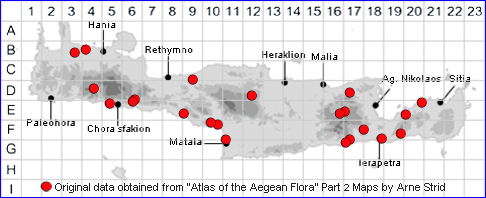
SPECIES DESCRIPTION
MELILOTUS NEAPOLITANUS
Family and Genus:- See- LEGUMINOSAE
Common Names:- None
Homotypic Synonyms:- Sertula neapolitana.
Meaning:- Melilotus (Gr) Honey-clover. A name used by the Greek academic
Theophrastus and refers to melilot's attractiveness to honeybees.
Neapolitanus (L) From Naples, Italy.
General description:- Slender, erect annual.
Stems:-
1) 15-40 cm tall; sulcate, appressed-pubescent.
Leaves:-
1) Leaflets:
a) lower, obovate-orbicular.
b) upper, oblong-linear, all obtuse, serrate in the upper half or third.
2) Stipules entire, lanceolate, acuminate.
Flowers:-
1) Raceme, 8-20-flowered, c. 10 mm at anthesis, elongating and lax in fruit.
2) Corolla, c. 4 mm, yellow.
a) standard, equalling the wings and keel.
4) Ovary and young legume, pubescent.
Fruit:-
1) Legume, 3-3·5 mm, globose, reticulate-veined, narrowing to a conical beak 0·5-1
mm, becoming glabrous, light brown when ripe.
Key features:-
1) Racemes, c. 1 cm.
2) Legume, 3-3·5 mm, globose with a short beak.
Habitat:- Dry open shrubby vegetation, olive groves, road embankments, open
coniferous woodland. 0-900 m (occasionally somewhat higher in Crete and
mainland Greece).
Distribution:- Throughout Greece but apparently rare in the Ionian Islands, -
Mediterranean. region to SW Anatolia and perhaps further east. Sparsely scattered
across Crete mainly around coastla areas
Flowering time:- Late March to mid-June.
Photos by:- Christopher Cheiladakis
